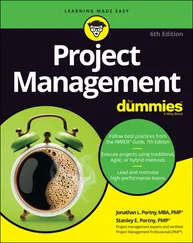However, there are several reasons why a manager might say no to a client:
– financial and economic reasons: in order to achieve what the client requests, it would be necessary to commit resources (financial, technical, human, time, etc.) that would be too great in relation to the expected return;
– technical reasons: the provider is not sure to be able to bring the expected result to the customer;
– safety reasons: what the client asks for carries a risk both for his/her own employees and for the service provider;
– image reasons: what the customer asks for can damage the reputation of the provider.
However, we must distinguish between over-quality and customer delight, because while we must guard against the former, the latter is inherent to customer orientation. The notion of delight appears in the field of marketing through the notions of customer satisfaction and experience.
Customer delight, considered as a positive emotional reaction (Oliver et al . 1997), consists of surprising the customer, in going beyond his/her expectations (see Table 1.1 for illustrations of these differences between over-quality and enchantment).
Table 1.1. Over-quality and customer delight
| Over-quality |
Enchantment |
| – A superior performance that the provider brings compared to what is expected by the client or what was agreed upon.– The customer does not always perceive this superior performance.– This performance has no real value for the customer.– The customer is not willing to pay for this performance.– The extra performance does not lead to increased customer satisfaction.– But it can mean an additional cost to the provider (direct or indirect, visible or hidden costs).– Example: cleaning an additional space that was not foreseen in the contract. |
– An additional value that the provider brings to its client that is not expected or asked for.– The customer clearly perceives this additional value.– This additional value brings the customer an additional benefit.– The customer might be willing to pay to benefit from this value.– Customer satisfaction is positively (and strongly) impacted.– It may involve additional cost for the provider, but it is a profitable investment.– Example: cleaning a site at the end of an intervention. |
This issue of the balance between satisfaction and profit questions the relationship between the service provider and its client more broadly. In complex cases and relationships where the financial and technical stakes are high, the question of the commitment of the service provider and also of the client arises. The service provider is not the only one involved in maintaining the balance between satisfaction and profitability. This balance will also depend on the client’s commitment to participate, to get involved in the long-term, to aim towards a partnership relationship. This will in turn justify for the service provider the investment in a relationship which, if it can be unbalanced at the beginning, because it requires taking a real risk, turning out to be more balanced in the long-term.
1.2.2. Strategic marketing
Strategic marketing will determine the company’s long-term orientation by deciding on its positioning and its major strategic axes. Strategic marketing relies on a thorough analysis and knowledge of the market and the environment in order to align its structuring decisions.
1.2.2.1. Knowledge of the market and the environment
In accordance with a strategic methodology, the analysis of the environment is divided into micro- and macro-environments. The micro-environment is close to the notion of market and groups together actors with whom the company has regular interactions and who constitute its daily life: clients, customers, distributors and intermediaries, and influencers. On the other hand, the macro-environment has a less direct and more distant influence on the company, but it is just as real and can sometimes be very strong 15.
Analyzing one’s environment means first of all locating and identifying each of the actors and then understanding their positions, their evolutions and their strategies in order to anticipate their impact on the company and also to think about collaborative perspectives or the ways in which the company can influence them. This will be the subject of the second part.
1.2.2.2. Positioning the offer
Positioning is the heart of strategic marketing by ensuring that the offer has a clear, distinct and privileged place in the customer’s mind so that it is preferred over competing offers. Positioning is the ultimate step in strategic marketing that begins with market segmentation and continues with segment targeting. These key marketing concepts are essential to the implementation of a customer focus 16.
1.2.3. Operational marketing
Operational marketing refers to the implementation of the marketing strategy. The notion of marketing mix is very closely associated with operational marketing.
1.2.3.1. The marketing mix
The marketing mix is the set of tools available to marketing to act on the buyer’s behavior in order to achieve the defined marketing strategy and reach the company’s objectives. McCarthy’s 1960 classification is widely adopted. It groups these tools into four categories called the “4Ps”: product, price, place, promotion.
A good marketing mix must above all be coherent, coherent between actions and coherent with the positioning.
1.2.3.2. Expanding the marketing mix
While the “4Ps” model remains the reference model of operational marketing, the means of action of marketing have been progressively widened. In order to be in phase with the evolution of the markets, it is obviously necessary today to integrate the notions of experience, customer relationship, digitalization, social responsibility and sustainable development. Among the various extensions of the marketing mix concept and more specifically of the “4P” model, it is interesting to look at two of them: the “4Cs” model and the concept of the services marketing mix.
The “4Cs” model, proposed in the 1990s by Robert Lauternborn, is a sort of transposition of the “4Ps” model from the supplier’s point of view to the customer’s one (Lauternborn 1990). Each of the four elements of the 4Ps is translated into a customer benefit in the 4Cs model: customer needs, convenience of buying, cost to satisfy and communication. The “4Cs” model thus emphasizes the customer orientation of marketing even more explicitly.
The concept of the service marketing mix was developed in the early 1980s by service marketing specialists to better integrate the specificity of service 17. Three other levers of action were added to the traditional “4Ps” model: people, physical evidence and processes. The people element takes into account the actors who play an essential role in the service relationship. These are the staff in contact, the customer and the other customers. The physical evidence reflects the importance of the physical environment in which the service takes place as well as the different tangible elements that are present during the relationship with the customer. The process refers to all the procedures, mechanisms, activities and flows necessary to provide the service. Each of these three service-specific levers is dealt with in the last part of this book.
1.3. The manager’s customer orientation in response to marketing issues
We must distinguish between function and culture. If marketing as a function is now facing certain challenges, its original culture, that is, the customer at the heart of the company, is more relevant than ever. The customer-oriented company can neither be the exclusive project of a department, even if it is a marketing department, nor the strategic vision of the management committee alone. Making customer orientation a managerial skill is, therefore, a response to the challenges of marketing and a powerful lever for achieving the promises of a customer culture in the company.
Читать дальше

![Matthew Vincent - [you] Ruined It for Everyone!](/books/216429/matthew-vincent-you-ruined-it-for-everyone-thumb.webp)










